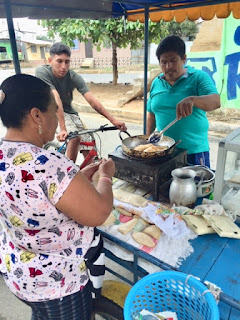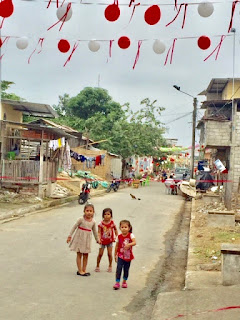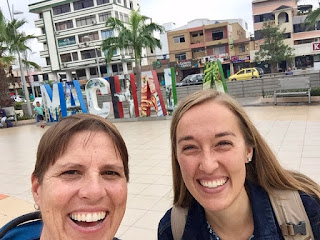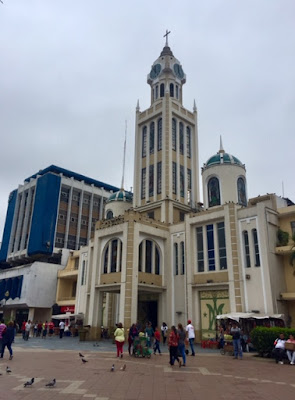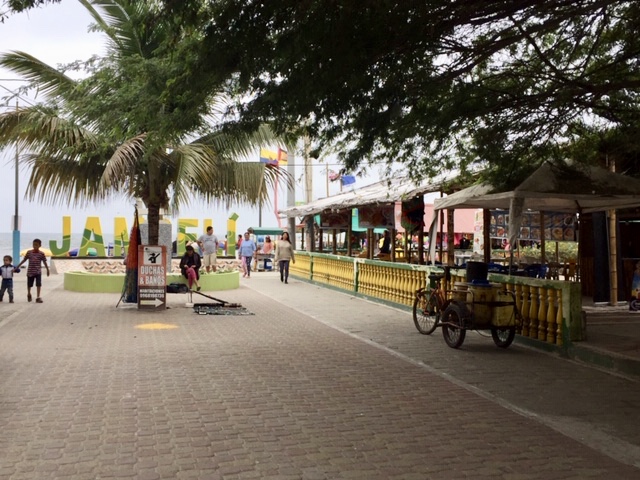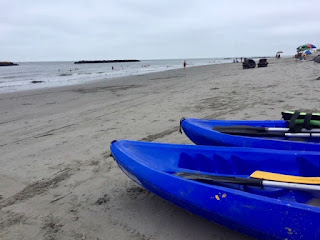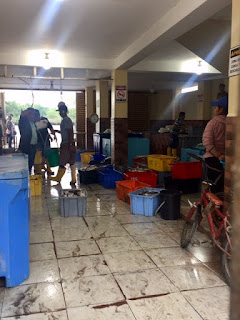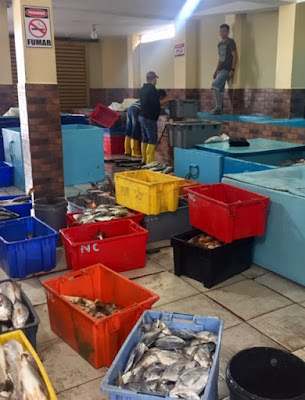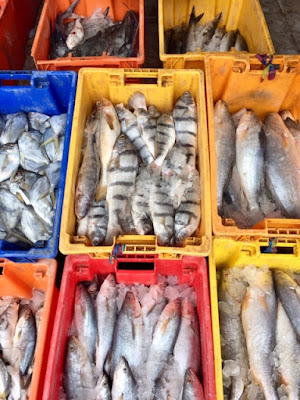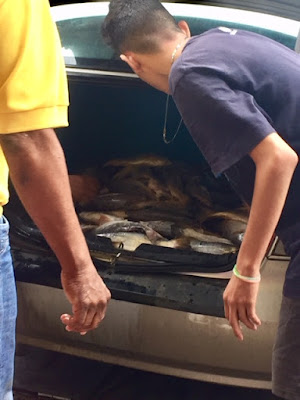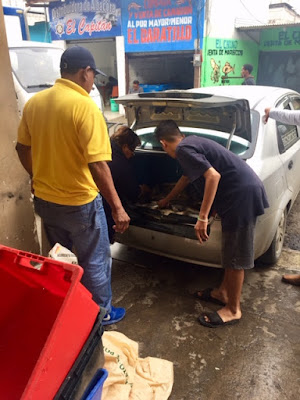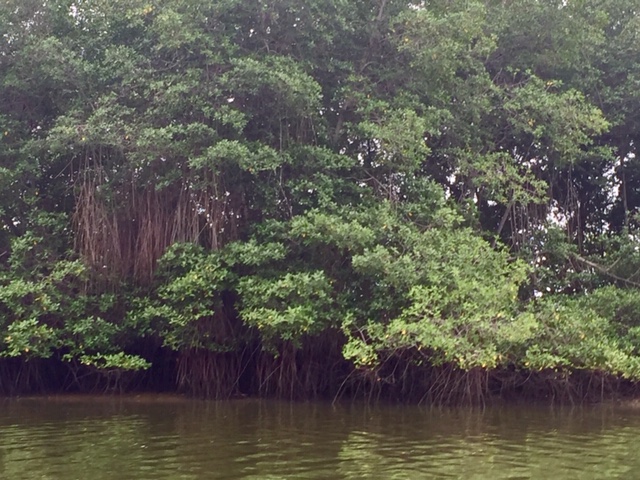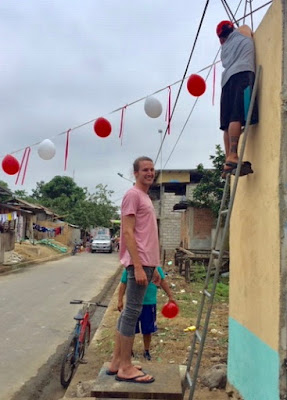
Before heading back north, I used the last days of my vacation to travel to the furthest southwest corner of Ecuador, near the Peruvian border. I wanted to visit a couple of Peace Corps friends and learn what I could about this very different environment. As my bus dropped quickly out of the Sierra, the warm, humid air of the coast came blasting through its windows. Then, the land flattened out into a sea of banana plantations surrounding the cities of Santa Rosa and Machala.
It is here, where my friend Chris (from Buffalo, NY) has made his life for the past year. I had such a good time hanging out with his host family while we helped them decorate their street for an upcoming festival. Host families are our lifeline to the community and Chris is really lucky to have such a loving and generous family, too.
| I, of course, made fast friends with all the cousins and neighbor kids. |
| Driving around this province is like being in a tunnel of banana plants, as far as the eye can see. |
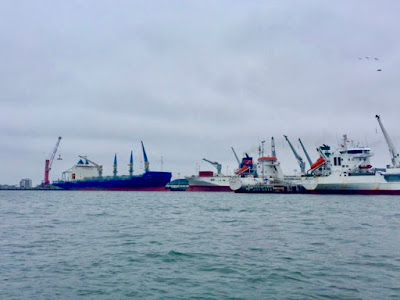 |
| Banana ships waiting in the Port of Machala |

and start loading raw fish into his trunk. No crate. No plastic. No ice. Just fish.
But where are they getting all of this shrimp? Is it being caught in the ocean, or harvested from a farm? A little more research clued me into the rest of this story. Here is a video of a shrimp farm in Ecuador. After the helicopter takes off, you only need to watch about 45 more seconds to get the idea.
https://www.youtube.com/watch?v=CWTBXd6yfdw
I had no idea shrimp farms could be so expansive. In my research, I learned that at one point, Ecuador was the fourth largest shrimp producer in the world, and the largest in the Western Hemisphere, according to the United Nations Food and Agriculture Organization. Then Thailand and other Asian countries jumped into the industry. Currently, Ecuador, Brazil and Mexico combine to provide 25% of the world’s shrimp catch. Ecuador is the 4th largest supplier of shrimp to US markets. In 2017, Ecuadorian shrimp farms produced 438,000 metric tons of shrimp, earned over $3,000,000 for the economy and provided 100,000 jobs. Wow! But these huge farms come at what cost? Google helped me find a lot of research on this as well. I found out that it’s a worldwide trend to convert wetlands, coastal mangrove forests and salt marshes to shrimp ponds. And in Ecuador’s south coast, 83% of the wetlands, mangrove forests and salt flats have already been converted into massive shrimp farms.
 And then I read something else. In the northern coast of Ecuador, “some 6000 inhabitants rely on the mangrove forests for their livelihood. However, changes brought about by new developments, such as African palm culture and commercial shrimp farming, are having an impact on the mangrove ecosystem. Research found that fishing and cockle gathering are the most important economic activities, with 85% of the households depending on them for as much as 75% of their household income. And this industry represents a significant source of income for women. In contrast, the 3000 hectares of shrimp farms in the north coast employ only 0.6% of the locals. Furthermore, construction of shrimp farms has led to the destruction of cockle-gathering grounds and damage to agricultural land.”
And then I read something else. In the northern coast of Ecuador, “some 6000 inhabitants rely on the mangrove forests for their livelihood. However, changes brought about by new developments, such as African palm culture and commercial shrimp farming, are having an impact on the mangrove ecosystem. Research found that fishing and cockle gathering are the most important economic activities, with 85% of the households depending on them for as much as 75% of their household income. And this industry represents a significant source of income for women. In contrast, the 3000 hectares of shrimp farms in the north coast employ only 0.6% of the locals. Furthermore, construction of shrimp farms has led to the destruction of cockle-gathering grounds and damage to agricultural land.” It’s a different world than we live in.
It’s so important for me to know where my food comes from, and that what I choose to eat makes a difference in our world. It makes a difference in the lives of others.
 On my 15-hour bus ride back home to the north, I thought about something that locals are always saying to me: “Ecuador is a small country, but it is mighty.” Not only does this small country have a considerable presence on the world’s food stage, but its strength is in the hardworking people who are mighty as well.
On my 15-hour bus ride back home to the north, I thought about something that locals are always saying to me: “Ecuador is a small country, but it is mighty.” Not only does this small country have a considerable presence on the world’s food stage, but its strength is in the hardworking people who are mighty as well.


